
Books, Articles, and Other Publications by David Kalat
Turner Classic Movies

Turner Classic Movies maintains a database about their movies, numbering over 165 thousand titles. Just over 6% of these movies are available on home video in any format, so TCM remains your only destination to see and learn about a vast number of these classic motion pictures.
From 2006 to 2016 I contributed to this database by writing essays about new acquisitions when they were added to the channel's line-up. Occasionally I also contributed DVD reviews for movies sold at TCM's online store.
Movie Morlocks / Filmstruck

Every Saturday from 2010 to 2016 I contributed a weekly blog to TCM's online community, which was then known as "Movie Morlocks." Not long after I departed, the forum was renamed "Filmstruck."
During that tenure I authored over 300 blog posts totalling more than 500,000 words--the equivalent of 6 full-length books. I've hung up my hat, but click the link below to step into the misty past and explore my adventures as a Movie Morlock.


American silent film comedies were dominated by sight gags, stunts and comic violence. With the advent of sound, comedies in the 1930s were a riot of runaway heiresses and fast-talking screwballs. It was more than a technological pivot—the first feature-length sound film, The Jazz Singer (1927), changed Hollywood.
Lost in the discussion of that transition is the overlap between the two genres. Charlie Chaplin, Buster Keaton and Harold Lloyd kept slapstick alive well into the sound era. Screwball directors like Leo McCarey, Frank Capra and Ernst Lubitsch got their starts in silent comedy.
From Chaplin’s tramp to the witty repartee of His Girl Friday (1940), this book chronicles the rise of silent comedy and its evolution into screwball—two flavors of the same genre—through the works of Mack Sennett, Roscoe Arbuckle, Harry Langdon and others.
too funny for words

A Critical History and Filmography of Toho's Godzilla Series

ISBN 978-0-7864-4749-7
appendix, notes, bibliography, index
hardcover (7 x 10) 2010
paperback and Kindle eBook
This thoroughly updated and revised critical account of the Godzilla movie franchise explores the fascinating story behind Japan’s most famous movie monster and its development from black-and-white arthouse allegory to international commercial juggernaut. Reviled by critics but boasting a dedicated cult following, the films of the Godzilla franchise provide a unique window into the national identities of both Japan and the United States. This work focuses on how differences in American and Japanese culture, as well as differences in their respective film industries, underlie the discrepancies between the American and Japanese versions of the films. It features detailed filmographic data for both the American and Japanese versions of each film, including plot synopses, cast, credits, and detailed production notes.
J-Horror
The Definitive Guide to The Ring, The Grudge, and Beyond
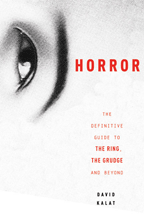
ISBN 1-932234-08-4
304 pages, paperback edition, photographs, bibliography, filmography
2007 from Vertical, Inc.
Through franchises such as THE RING and THE GRUDGE, Japanese horror films over the past decade or so have exerted a singular influence on the horror genre and on the film industry as a whole. But navigating the numerous versions released in the U.S. And Japan of these and other films, and figuring out which to watch next, can be quite difficult. Enter J-HORROR, which is at once a history of and a reference guide to the genre. Comprehensive in scope and filled with a wealth of factual detail and acute insight, J-HORROR will make you an instant expert in one of the hottest trends in recent film history.
The Strange Case of Dr. Mabuse
A Study of Twelve Films and Five Novels
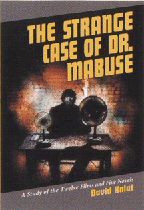
ISBN 0-7864-1066-3300 pages, paperback edition, 110 photographs, bibliography, filmography, index
2001 from McFarland & Co. Press
The Mabuse phenomenon is recognized as a touchstone of horror in Germany as much as Frankenstein and Dracula are in the United States. This work is a study of the 12 motion pictures and five books (as well as some secondary films) that make up the eight decades of adventures of master criminal Mabuse, created by Norbert Jacques in the bestselling 1922 German novel and brought to the screen by master filmmaker Fritz Lang that same year. Both on screen and off, the story of Dr. Mabuse is a story of love triangles and revenge, of murder, suicides, and suspicious deaths, of betrayals and paranoia, of fascism and tyranny, deceptions and conspiracies, mistaken identities, and transformation.
Homicide: Life on the Streets
An Unofficial Companion
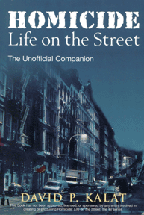
ISBN 978-1580630214
348 pages, paperback edition
1998 from Renaissance Books
Homicide: Life on the Street is addictive television. Each week we tune in to see the gritty reality that makes this show the best police drama to ever grace the small screen. There aren't any car chases, rarely any shootouts, and sometimes the cases don't get solved. Instead, these detectives keep their clothes on, have a relentlessly morbid sense of humor, and catch the criminals because they have brains, not necessarily brawn. In other words, they're real.
Homicide: Life on the Street, The Unofficial Companion by David P. Kalat--the first and only full-length guide to this Emmy Award-winning and three-time Peabody Award-winning television series--brilliantly captures the essence of this groundbreaking show.

I did not write this book. My mother did, a long time ago. She died in 1997 and twenty years later I published her debut, posthumous novel about a murder mystery unfolding on the sex-segregated campus of (thinly veiled) Duke University in 1965.
EASY PREY

In addition to the books listed above, David Kalat has also contributed chapters to the following multi-author compilations.

Fear Without Frontiers
Horror Cinema Across the Globe
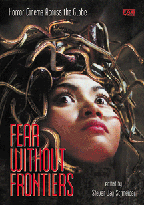
ISBN 978-1903254158
320 pages, paperback edition, illustrated
2003 from FAB Press
Included in The Guardian's list of the top ten film books of 2003! Horror movies have always found receptive audiences in their home countries. Finally, the genre's most colourful and least familiar creators are given their due in editor Steven Schneider's wide-ranging collection of articles from a fine assembly of renowned world horror experts. Discover such hidden treasures of world cinematic horror as Singapore's pontianak cycle, 1930s Mexican vampire movies, Austrian serial killer flicks, Germany's Edgar Wallace krimis, Bollywood ghost stories, Indonesia's penanggalan tales, the Chinese take on Phantom of the Opera, and the Turkish versions of Dracula and The Exorcist. 24 pulse-pounding chapters with selected filmographies and scores of images from the movies under discussion, including a stunning 16-page full-colour section!

Third Person
Authoring and Exploring Vast Narratives
ISBN 978-0262232634
636 pages, hardcover edition
2009 from the MIT Press
The ever-expanding capacities of computing offer new narrative possibilities for virtual worlds. Yet vast narratives—featuring an ongoing and intricately developed storyline, many characters, and multiple settings—did not originate with, and are not limited to, Massively Multiplayer Online Games. Thomas Mann's Joseph and His Brothers, J. R. R. Tolkien's Lord of the Rings, Marvel's Spiderman, and the complex stories of such television shows as Dr. Who, The Sopranos, and Lost all present vast fictional worlds.
Third Person explores strategies of vast narrative across a variety of media, including video games, television, literature, comic books, tabletop games, and digital art. The contributors—media and television scholars, novelists, comic creators, game designers, and others—investigate such issues as continuity, canonicity, interactivity, fan fiction, technological innovation, and cross-media phenomena.
The Films of Edgar G. Ulmer

ISBN 978-0-8108-6700-0
320 pages, paperback edition
2009 from Scarecrow Press
Considered the "King of Poverty Row," Edgar G. Ulmer (1904-1972) was an auteur of B productions. A filmmaker with an individual voice, Ulmer made independent movies before that category even existed. From his early productions like The Black Cat (1934) and Yiddish cinema of the late 1930s to his final films of the late 1950s and early 1960s, Ulmer created enduring works within the confines of economic constraints.
Almost forgotten, Ulmer was rediscovered first in the 1950s by the French critics of the Cahiers du Cinema and then in the early 1970s by young American directors, notably Peter Bogdanovich. But who was Edgar G. Ulmer? The essays in this anthology attempt to shed some light on the director and the films he created—films that are great possibly because of, rather than despite, the many restrictions Ulmer endured to make them.
101 European Horror Films

ISBN 978-1-84457-164-2
258 pages, paperback edition
2007 from the British Film Institute
From bloodsucking schoolgirls to flesh-eating zombies, and from psychopathic killers to beasts from hell, 100 European Horror Films provides a lively and illuminating guide to a hundred key horror movies from the 1920s to the present day. Alongside films from countries particularly associated with horror production - notably Germany, Italy, and Spain - and movies by key horror filmmakers such as Mario Bava, Dario Argento, and Lucio Fulci, are discussions of films from countries as diverse as Denmark, Belgium, and the Soviet Union, and filmmakers such as Bergman, Polanski and Claire Denis, more commonly associated with art cinema.
501 Movie Directors
A Comprehensive Guide to the Greatest Filmmakers
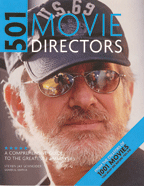
ISBN 0-7641-6022-2
640 pages, hardback edition
2007 from Barron's
A copy of this valuable book is destined to find its way into the home of every true movie fan, cinema scholar, and film critic. It’s a chronological compendium that profiles the 501 most important film directors of all time. Entries—augmented with a photo of each director plus movie stills from his or her films—describe such major figures as Sergei Eisenstein, Martin Scorsese, Alfred Hitchcock, Fritz Lang, Leni Riefenstahl, Orson Welles, Federico Fellini, Steven Spielberg, Robert Altman, and many, many others. Written by an expert team of film critics and historians, this book was compiled under the direction of editor Steven J. Schneider.
Here is a comprehensive survey of the creative imaginations behind more than a hundred years of filmmaking. It’s a wonderful book for browsing, for reference, and for gaining insights into the personalities who directed the most memorable movies ever made.
501 Movie Stars
A Comprehensive Guide to the Greatest Screen Actors

ISBN 0-7641-6021-4
640 pages, hardback edition
2007 from Barron's
This is a guide to major movie legends as well as less-known performers, both American and international. Arranged by the decade of the entrant’s birth, each entry includes a photo; a list of major films; birth date (and, where pertinent, death date); and an essay. Most entries are a page, but major stars get more coverage. This title complements the editor’s prior title, 1001 Movies You Must See Before You Die (Barron’s, 2005), and can function as a delightful book to browse as well as a reference source for film fans.
